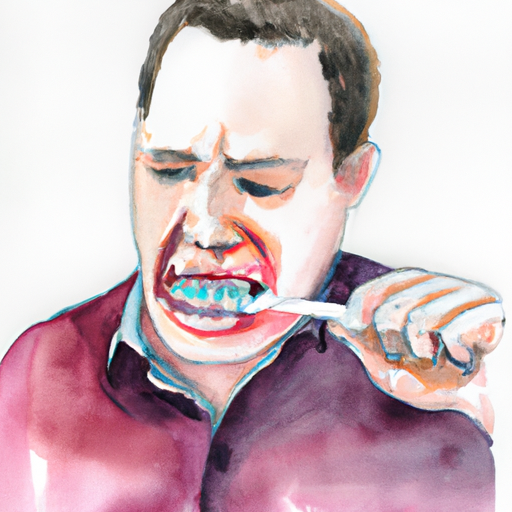Periodontitis, a severe gum infection, affects millions of people worldwide. It is a progressive condition that, if left untreated, can lead to tooth loss and other serious health complications. In this article, we will delve into the causes, symptoms, and diagnosis of periodontitis to provide a comprehensive understanding of this oral disease. We will also explore the various treatment options available, highlighting the most effective approaches. Additionally, we will discuss preventive measures and offer tips to maintain optimal oral health, helping you steer clear of the clutches of periodontitis. Whether you are currently suffering from this condition or simply seeking to prevent its onset, this article will serve as a valuable resource to guide you towards a healthier, happier smile.
You can find out more about this substance here: https://bbgate.com/tags/amphetamine/.
1. Understanding Periodontitis: Causes, Symptoms, and Diagnosis
Periodontitis is a serious gum infection that damages the soft tissue and destroys the bone that supports your teeth. If left untreated, it can lead to tooth loss and other complications. Understanding the causes, symptoms, and diagnosis of periodontitis is crucial for effective treatment and prevention.
Causes:
Periodontitis is primarily caused by poor oral hygiene, which allows plaque to build up on the teeth and harden into tartar. The bacteria in plaque and tartar produce toxins that irritate and inflame the gums, leading to infection. Other factors that can contribute to periodontitis include smoking, genetic predisposition, hormonal changes (such as during pregnancy), certain medications, and underlying health conditions like diabetes.
Symptoms:
Recognizing the symptoms of periodontitis is essential for early detection and prompt treatment. Common signs include red, swollen, and tender gums, bleeding while brushing or flossing, receding gums, persistent bad breath, a persistent bad taste in the mouth, loose or shifting teeth, and changes in the bite. Some individuals may also experience gum abscesses, where pus collects in pockets around the teeth.
Diagnosis:
Diagnosing periodontitis typically involves a comprehensive evaluation by a dental professional. The dentist or periodontist will examine your gums, measure the depth of the periodontal pockets (spaces between the gums and teeth), and assess any signs of inflammation or gum recession. They may also take dental X-rays to evaluate the extent of bone loss. Additionally, a detailed medical and dental history will be obtained to identify risk factors and potential underlying conditions.
To accurately diagnose periodontitis, your dentist may use a periodontal probe, a small instrument that measures the depth of the periodontal pockets. Generally, a pocket depth of 1-3 millimeters is considered healthy. Deeper pockets suggest the presence of gum disease. The severity of periodontitis is often classified into different stages, ranging from mild to advanced, based on the extent of gum and bone damage.
It is important to note that period
2. Effective Treatment Approaches for Periodontitis
Periodontitis, a severe form of gum disease, affects millions of people worldwide. It is characterized by inflammation and infection of the gums, which can lead to tooth loss if left untreated. Thankfully, there are several effective treatment approaches available to combat periodontitis and restore oral health.
1. Scaling and Root Planing: This non-surgical procedure is often the first line of defense in treating periodontitis. It involves the removal of plaque and tartar from the tooth surfaces, both above and below the gumline. The dentist or dental hygienist uses specialized tools to scrape away the buildup and smooth the roots of the teeth, allowing the gums to reattach properly.
2. Antibiotics: In some cases, antibiotics may be prescribed as an adjunct to scaling and root planing. These medications help to eliminate the bacteria causing the infection and reduce inflammation. Antibiotics can be taken orally, applied topically, or even inserted into the periodontal pockets to target the infection directly.
3. Laser Therapy: Laser-assisted periodontal therapy is an advanced treatment option that can effectively combat periodontitis. The laser is used to remove diseased gum tissue and kill bacteria, promoting gum healing and reducing pocket depth. Laser therapy is less invasive and causes minimal discomfort compared to traditional surgical methods.
4. Surgical Interventions: In more advanced cases of periodontitis, surgical procedures may be necessary. These include flap surgery, where the gum tissue is lifted to allow deep cleaning of the tooth roots, and bone grafting, which involves replacing damaged bone with graft material to support the teeth. Surgical interventions aim to reduce pocket depth, improve gum health, and promote tissue regeneration.
5. Maintenance and Follow-up Care: Treating periodontitis requires ongoing care and maintenance to prevent its recurrence. Regular dental check-ups, professional cleanings, and diligent oral hygiene practices are crucial in managing periodontal disease effectively. Patients must follow their dentist’s recommendations on brushing techniques, flossing, and using antimicrobial mouthwashes.
It is important to
3. Preventing Periodontitis: Tips for Maintaining Optimal Oral Health
Maintaining optimal oral health is crucial for preventing periodontitis, a serious gum infection that can lead to tooth loss and other health complications. By adopting good oral hygiene habits and making a few lifestyle changes, you can significantly reduce your risk of developing periodontitis. Here are some tips to help you maintain a healthy mouth and prevent periodontitis:
1. Brush and floss regularly: Brush your teeth at least twice a day with a soft-bristled toothbrush and fluoride toothpaste. Make sure to clean all surfaces of your teeth and spend at least two minutes brushing. Flossing should be done daily to remove plaque and food particles from between your teeth and along the gumline.
2. Use mouthwash: After brushing and flossing, rinse your mouth with an antimicrobial mouthwash. This helps kill bacteria that may remain in your mouth, reducing the risk of gum infections and periodontitis. Look for a mouthwash that contains fluoride to strengthen your teeth.
3. Maintain a balanced diet: A healthy diet plays a vital role in oral health. Include plenty of fruits, vegetables, whole grains, and lean proteins in your diet. Limit your intake of sugary foods and drinks, as they contribute to tooth decay and gum disease. Drinking plenty of water throughout the day also helps wash away food particles and keeps your mouth hydrated.
4. Avoid tobacco products: Smoking and chewing tobacco are extremely harmful to your oral health. They can cause severe gum disease and delay the healing process. Quitting tobacco products significantly reduces your risk of developing periodontitis and improves overall oral health.
5. Visit your dentist regularly: Regular dental check-ups are essential for preventing periodontitis. Dentists can identify early signs of gum disease and provide appropriate treatment. Professional dental cleanings also help remove plaque and tartar buildup, reducing the risk of gum infections.
6. Manage stress: Chronic stress weakens the immune system and can make you more susceptible to gum infections. Find healthy ways to manage stress, such as exercise, meditation, or engaging in hobbies



